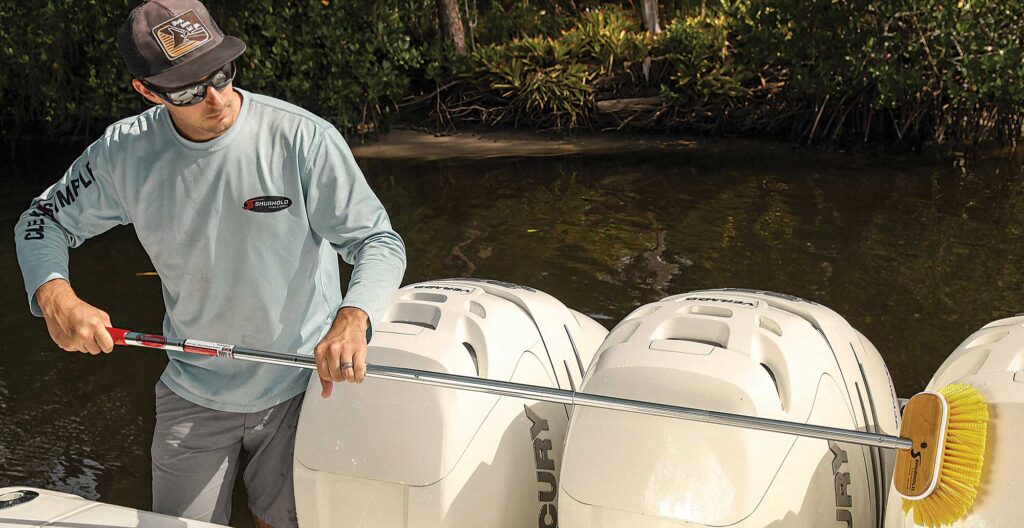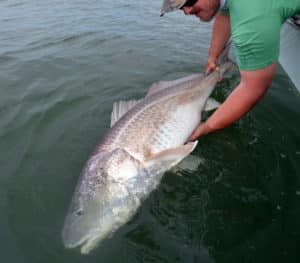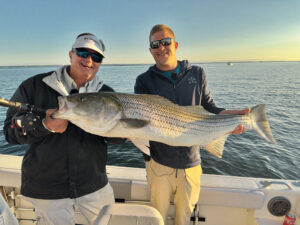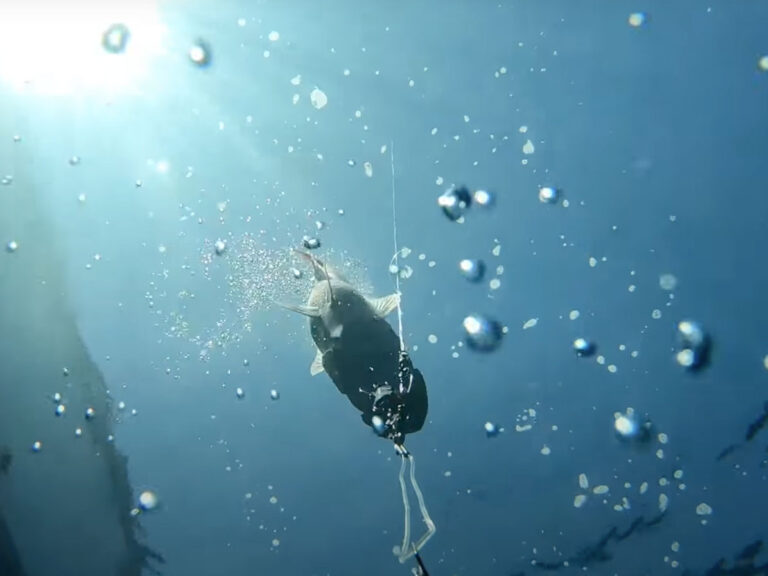After a long day on the water my boat is covered with fish slime and hazy with sea salt. Even though I’m tired, sunburned and sore, the trip isn’t over until the boat, gear and tackle are clean and stored.
I learned to clean a boat the hard way: working as a mate on a headboat. In addition to picking up after 50 customers and landing hundreds of fish, I helped the captain keep the engines and systems below deck as clean as above deck. The lessons paid off with my own boat, cleaning and maintaining are as important as rigging rods and tying rigs.
A clean boat resists corrosion and allows me to identify and repair potential problems without fighting through grease and grime. The process includes daily scrubbing and rinsing and regular deep cleaning and waxing. And, cleaning the boat reduces the chance of spreading invasive species. Whatever the reason, there’s no excuse to fish out of a dirty boat.
Cleaning Your Boat Hull
The first step is cleaning the outside of the boat. Soapy water and a soft brush removes salt and grime from my boat’s hull. I use a Salt Off detergent and mixer to apply soap to the area. Then I use a West Marine Admiral Deck Brush with a telescoping handle to scrub in small circles. Finally, I rinse with freshwater and use a wet rag to follow up on trouble spots.
My secret sauce for tough jobs, like blood stains or grease spots, is a witches brew of a gallon of water, a ¼ cup of West Marine Heavy Duty Boat Soap and a couple teaspoons of Mary Kate On Off acid-based hull cleaner.
Muriatic acid is potent stuff, it smokes in the bucket and a whiff of it will eliminate some brain cells. I use it very sparingly because it also removes the boat wax and and burns holes in my clothes.
I dip the deck brush into the mixture and let most of the liquid drain back into the bucket. Then I scrub a small area and quickly rinse it off. I’ve tried other soaps and cleaners, nothing lifts stains like this stuff.

Cleaning the Deck
After I clean the outside of the boat, I turn my attention to the inside. Even with constant scrubbing and rinsing during the day, the deck is a mess by the time I get the boat home and unloaded.
First, I pack my gear and unload it from the boat. Then I rinse my rods and store them (more on that later). With the boat unloaded, I clean the fish. Then I clean the cooler, buckets, knives, scissors, bait board and any gear that contacted salt and fish slime. I use a mixture of boat soap and a touch of bleach to kill bacteria and eliminate odor. I use a short handle brush and a terry cloth towel to scrub my gear.
Once everything is off the boat and stored, I use the Salt Off and mixer. I apply the soap and use a medium brush to scrub the non-skid areas and a soft brush for the rest of the surfaces. Knock off the top layer of dirt with a strong stream of water from the hose. Scrub a five-foot by five-foot area at a time so the soap doesn’t dry before rinsing.
Then I move to the exterior of the console with a fresh bucket of boat soap and a terry cloth towel and soft brush. Let the boat soap do the work applying liberally and swirling with the towel.
Finally, I turn to rinsing the canvas, aluminum, windows and clear plastic. I don’t use detergent on these surfaces, just water from the hose. Twice per year I clean each of these parts with appropriate cleaner and wax.
Then, I use a chamois towel to dry the outside of the console, plastic, aluminum and windows. To prevent water spots, I thoroughly rinse the chamois of salt and grime.
Interior Cleaning
Cleaning inside the cabin is like cleaning a house, I use the same products and tools. Run the vacuum. Dust horizontal surface. Apply wood cleaner to the wood. Windex the windows.
Moisture is the biggest enemy. Run a dehumidifier and place moisture absorbing desiccants in trouble spots to keep mold at bay. On my boat, I leave the hatches open on nice days. When I get a mold outbreak, I use mildew stain remover to kill, remove and prevent the return.
Cleaning the Head
I clean the outside of the toilet with a toilet cleaner a brush and a few paper towels.
Inside of the toilet is another matter. After each trip, run freshwater through the system to prevent odors. Over time, marine toilets build up deposits that affect the mechanics and flow. Once a month, run a half-quart of white vinegar slowly through the system. For more difficult buildup, use a light solution of muriatic acid and slowly pump it through the system.
Engine Cleaning
The first step to a clean engine compartment is managing moisture and eliminating mold and mildew. Specialized cleaners designed to eat away grease, salt, dirt and mildew without damaging paint, plastic or metal cover the most area quickly without damaging anything.
Before I clean the engine compartment and console, I mist electrical connections with light oil to prevent moisture or detergents causing a short. Then, I use a soft bristle brush to agitate the dirt and wipe away with a microfiber towel. Microsoft towels don’t leave behind dust or fibers like a terry cloth towel or paper towel.
A hand held sprayer with cleaning solution applies cleaner without forcing moisture into electrical connections. A light mist of water removes the cleaner. Heavy dirt and collected moisture is sucked out with a wet vac.
I clean electrical connections with a light oil and coat with dielectric grease. Use a headlamp to illuminate the dark corners of the engine bay and console. The key is to work carefully and intentionally, cleaning each part of the below-deck area with the correct tool and detergent.
Cleaning Your Fishing Gear
Cleaning fishing gear is the best way to keep it ready for action. After each fishing trip, I rinse my rods and reels with a light spray of freshwater. Cleaners or oils leave a residue which attracts salt and grime, so I only use a light soap when the reels and rods are covered in salt and slime.
Before I rinse the reels, I tighten the drag. After I rinse the reel I loosen the drag so it doesn’t bind up. A couple times each season, I wipe down the rod and reel with a light degreaser on a microfiber towel. To protect my rods from the sun and restore their shine, I apply car polish and buff off with a microfiber cloth.
A good fishing reel is sealed against the elements so I don’t have to open the side plates to clean and lubricate the gears. A couple times each season I take the spool off a spinning reel and lightly lubricate where the shaft enters the reel. I also drip a drop of lube into the bail arm hinge, handle base and knob. Then, I wipe away any excess oil with paper towel.
Cleaning Lures and Baits
At the end of a fishing trip, I collect all the lures and hooks I’ve used and place them in a perforated tray. I rinse the tackle with freshwater while agitating and scrubbing soft plastic, feathers and bucktail hair. Then, I hang the lures and hooks to dry. After each trip, I replace leaders and re-tie rigs. For hard lures, I deep clean with car compound and polish. At the first sign of rust I replace hooks.
Cleaning Waders and Boots
From October through April, I wear waders, boots, paddling pants and foul weather gear. To keep my expensive outerwear performing well and lasting long, I rinse with freshwater after each trip. Then, I hang my gear outside to dry. When the gear is completely dry, I hang it in the garage. Hanging my outerwear allows it to air out and prevents mold. Once a year I deep clean my gear with a light laundry detergent and a soft brush and rinse thoroughly. I coat zippers with wax. Then I dry the clothing completely and store in a plastic crate in a well-ventilated and cool space.
Preventing Corrosion
Corrosion is the enemy. Salt, water and metal are a chemical formula for electrolysis. Corrosion doesn’t stop working so preventing rust is a full time job. The first line of defense is a healthy dose of freshwater and fresh air. Washing away salt and dirt goes a long way to prevent breakdown. I use cleaning products designed for boats and tackle. These products are chemically formulated for the unique cleaning jobs and environment boaters face. Drying my gear and keeping it dry is the next step to cut corrosion at the source. But that’s not enough. I coat my hooks with a light oil and let them dry on a clean terry cloth. To prevent corrosion on my lures and hooks, I use tackle boxes with plastic that emits a corrosion resistant coating.
Storing Your Boat and Gear
I store my boat on my trailer in my yard away from trees and leaves. I cover the engine cowling to prevent birds from building a nest in the vents. During the offseason, I cover my boat with a custom cover that is vented to release moisture.
Organizing my tackle and gear is a full time job. I prefer to remove almost all my tackle and gear from the boat between trips. I store tackle and tools in a gear bag I move between the boat and the garage. Tools and leader are in dry bags and lures and hooks are in tackle trays. My rods are stored on a vertical rod rack with room for 18 rods. The rack doesn’t take up space in the garage and it keeps the rods safe and lines untangled.
Conclusion
Keeping the boat clean is a discipline. Between fishing trips, I sweep out leaves at least once a week. Before a fishing trip, I wash the inside of the boat and deck. After I launch the boat, the first thing I do is rinse out dirt I tracked into the boat. On the water, I constantly rinse off slime and scrub away blood and stains. As I return to shore, I give the boat a quick scrub and saltwater washdown. Then, back at the house, the boat gets a full wash, scrub and dry. Several times a year, I go to work on mold and mildew below deck and grease build up on the motor. The best defense against dry rot, bleaching, abrasion and corrosion is a good coat of boat wax on the hull, canvas, glass, plastic and metal surfaces. If you don’t like scrubbing, wrenching and replacing, don’t buy a powerboat. The easiest way to reduce the cost of maintaining the boat is investing sweat equity into keeping the boat clean.









